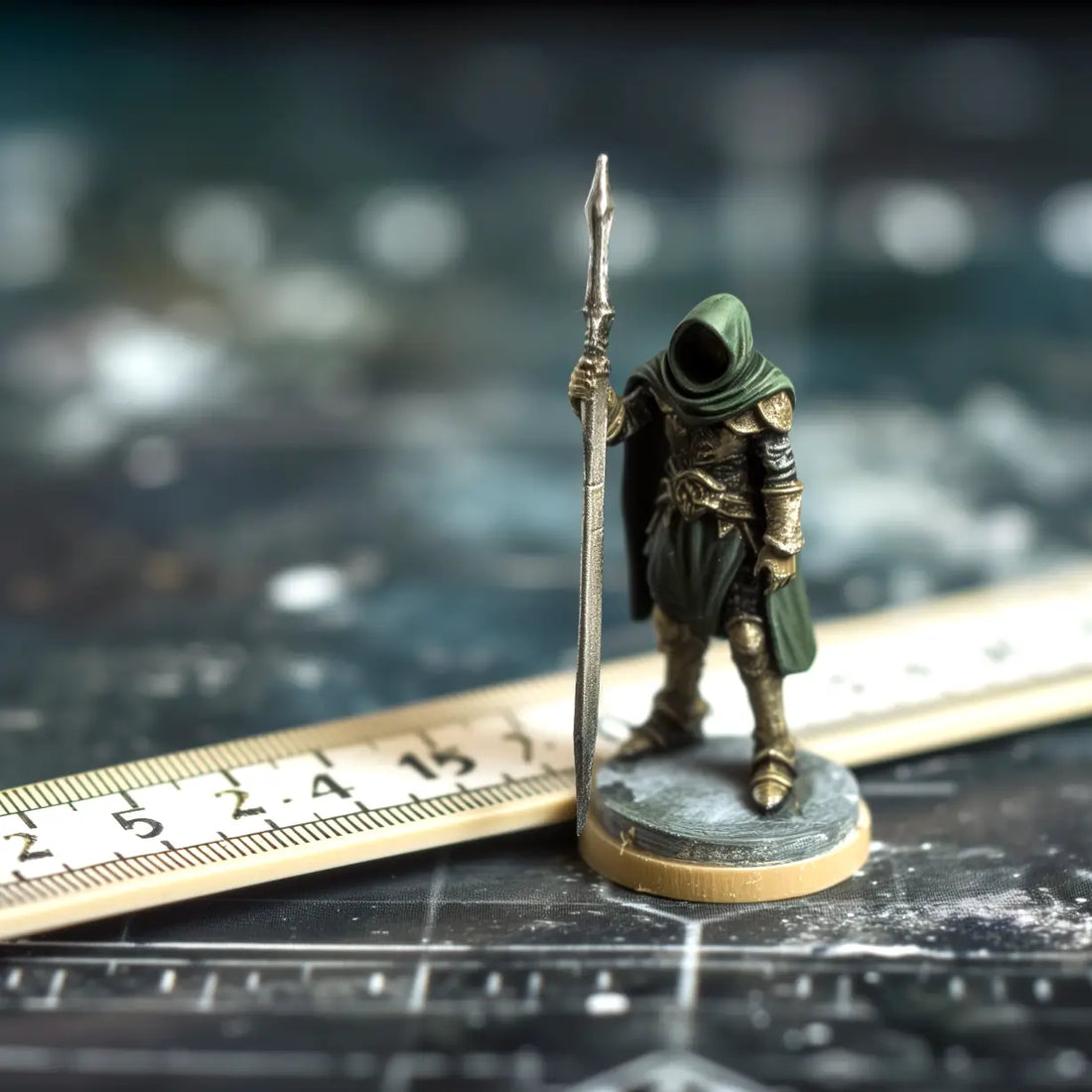
Miniature Scale: Your Guide to Tabletop Miniatures
TabletopLand LLCShare
Whether you're commanding vast armies or guiding adventurers through dungeons, miniatures bring tabletop games to life. But here's the thing—scale matters. A heroic knight that towers over goblins in one game might look comically oversized in another. Getting the right scale isn't just about aesthetics; it's about creating an immersive experience where everything feels just right.
If you're new to miniatures or just need a quick answer, our scale calculator takes the guesswork out of sizing. But if you want to understand what those numbers really mean—and why your D&D figures look different from your Warhammer collection—read on.
The Three Main Gaming Scales
Most tabletop games use one of three primary scales, each chosen for specific gameplay reasons:
Epic Scale: 6mm (1:285)
Games: Battletech, Epic 40k
Why this scale: When you're fielding massive mechs or entire armies, 6mm lets you fit sprawling battles on a regular table. A 30-foot tall mech becomes a manageable inch-tall model. Perfect for games where tactics matter more than individual character details.
Standard Scale: 28mm (1:56 to 1:60)
Games: D&D, Pathfinder, most RPGs
Why this scale: The sweet spot for character-focused games. Large enough to show facial features and equipment details, small enough to fit a party of adventurers in a dungeon room. This has become the industry standard for good reason.
Heroic Scale: 32mm (1:50 to 1:54)
Games: Modern Warhammer 40k, Age of Sigmar
Why this scale: Games Workshop shifted to this slightly larger scale to make their models more imposing and easier to paint. The extra few millimeters make a surprising difference in presence and detail.
What Do These Numbers Actually Mean?
When we say "28mm scale," we're measuring from a figure's feet to its eyes (not the top of its head). For an average human around 5'8" tall:
- 6mm scale: The figure stands about 6mm tall (roughly ¼ inch)
- 28mm scale: The figure stands about 28mm to eye level (roughly 1⅛ inches total)
- 32mm scale: The figure stands about 32mm to eye level (roughly 1¼ inches total)
Scale ratios work differently. A 1:56 scale means the miniature is 56 times smaller than real life. The smaller the second number, the larger the miniature.
Choosing the Right Scale for Your Game
For RPGs and character-driven games: Stick with 28mm. It's the standard for D&D and Pathfinder, fits standard 1-inch grid squares perfectly, and offers the best selection of miniatures.
For large battles: Consider 15mm or 6mm scales. You can fit entire armies on your table and still have room to maneuver.
For display and painting: Go bigger! 32mm, 40mm, or even 54mm figures give you more canvas for detailed work. They're not practical for most games, but they're stunning showcase pieces.
The 3D Printing Advantage
Here's where modern technology shines. With 3D printing, you're not locked into whatever scale a manufacturer chose. Need your dragon to be truly terrifying? Scale it up. Want to fit more enemies on the board? Scale them down. Our miniatures are designed to look great at any size within reason.
The key is consistency. Whatever scale you choose, stick with it across your collection. A 32mm hero fighting 25mm goblins just looks wrong.
Quick Scale Reference
Still confused? Here's what you need to know:
- Playing D&D or Pathfinder? Use 28mm (1:56-1:60)
- Playing modern Warhammer? Use 32mm (1:50-1:54)
- Playing Battletech? Use 6mm (1:285)
- Just painting for fun? Go with 32mm or larger
Remember, our scale calculator can convert between scales instantly. Just enter your measurements and let it do the math.
At the end of the day, miniatures are about bringing imagination to life. Whether you're defending a kingdom or conquering the galaxy, the right scale helps tell your story. Choose what works for your table, your eyesight, and your painting skills—then let the adventures begin!
